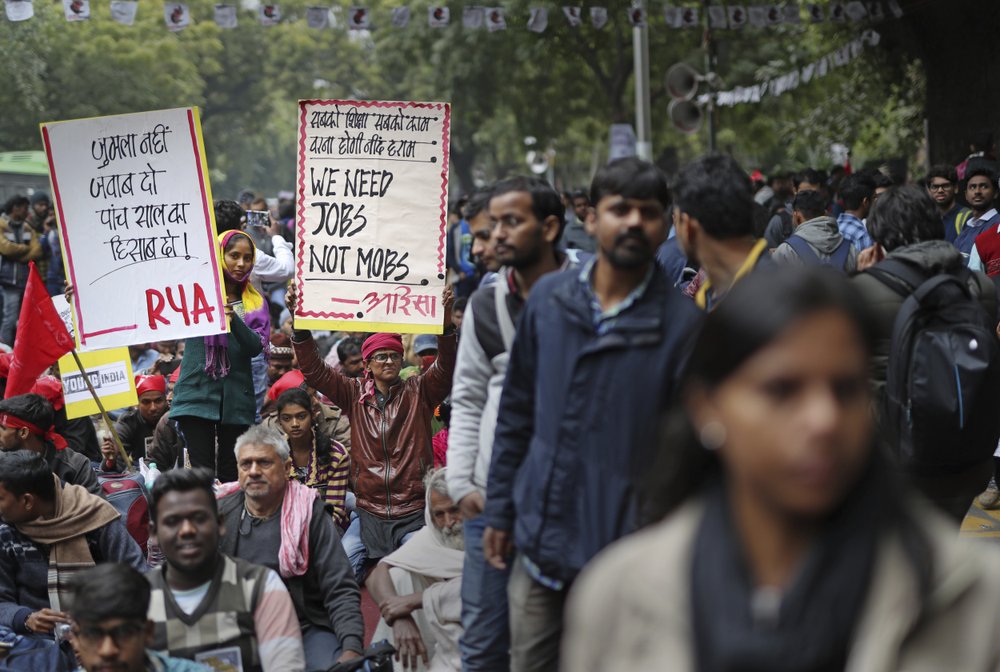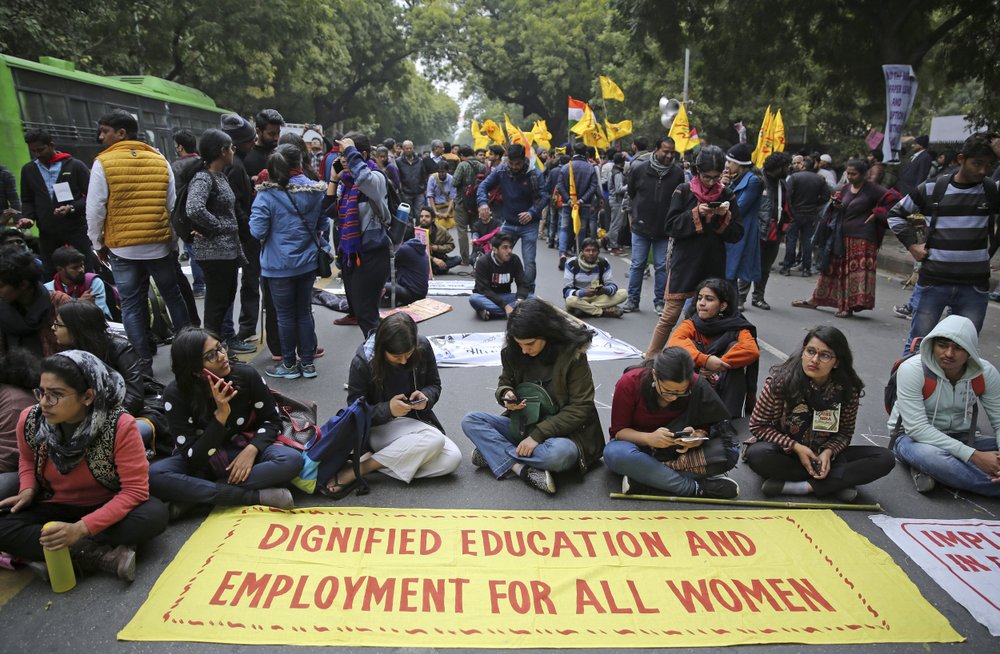
View of Dharavi slum in Mumbai, India, March 16, 2023. Rajanish Kakade/AP
View of Dharavi slum in Mumbai, India, March 16, 2023. Rajanish Kakade/AP
The latest projection from the United Nations indicated that the population of India is expected to match that of China by the end of April. The estimate came days after the report by the UN Population Fund released last week saying that India would have 2.9 million more people than China by the middle of 2023.
According to United Nations Population Fund, a country experiencing an increase in the number of young people, coupled with a decline in fertility rates, has the potential to benefit from a "population dividend." This occurs when there are more people in the workforce relative to dependents, leading to an increase in economic productivity.
As the demographic dividend is considered a crucial factor in economic development, the current demographic shift in India has raised questions about whether the growing young population will continue to drive economic growth in the years to come.
The inconclusive relationship
Economic development and population size are intertwined. From a long-term perspective, economic development could lower the birth rate and decrease the population.
However, there is "no absolute positive or negative relationship between the two variables," said Li Ting, professor at the Population Development Studies Center, Renmin University of China.
"The size and characteristics of the population size can either promote or hinder the economic development, depending on whether it is in line with the level of technological development and economic growth model," she said.
Take the rapid economic develop of China during the reform and opening-up as an example. At that time, China's market economy was a labor-intensive, export-oriented, and processing-based development model, which matched the characteristics of the population.
In developed countries, purchasing power tends to be saturated, and investors are paying attention to the strong capital markets in emerging market economies, said Li, adding that India's growing population presents potential for both consumption and consumption upgrade.
However, whether the consumption market can reach expectations depends on many factors, such as people's income level and livelihood security.
China's advantage lies in the fact that its current industrial and technological development has entered a relatively advanced stage, and a basic consumer market has been formed, Li told CGTN, adding that the issue now is consumption upgrading, which means an increase in everyone's level of consumption.

Indian students from various student organizations participate in a protest rally, demanding the government address the problem of unemployment, New Delhi, India, February 7, 2019. /Altaf Qadri/AP
Indian students from various student organizations participate in a protest rally, demanding the government address the problem of unemployment, New Delhi, India, February 7, 2019. /Altaf Qadri/AP
A large but job-scarce economy
Over the past decade, India has become the fastest-growing economy in the world. The International Monetary Fund (IMF) forecasts a 5.9 percent of gross domestic product (GDP) growth for India this year, compared to 1.6 percent for the U.S.
Despite the growth of India's economy, joblessness also increased. Throughout the period of 2022-23, India's unemployment rate has remained high, according to the Centre for Monitoring Indian Economy (CMIE). In March, the labor force participation rate was less than 40 percent, and the unemployment rose to a three-month high of 7.8 percent.
Li noted that if a country has insufficient employment opportunities to absorb its labor force, the growing population would impose a burden on the country, as the labor potential of the population cannot be converted," said Li.
Meanwhile, India has among the lowest youth employment rate. In the 2016-17 fiscal year, the employment rate among the youth between 15 to 24 years old was 20.9 percent, according to the CMIE. During the pandemic, the country's youth employment rate fell to 10.9 percent.
"India has the world's largest youth population … it should be grabbing this rare opportunity of easy availability of labor and capital to fuel rapid growth. However, it seems to be missing this bus," said Mahesh Vyas, chief executive at the CMIE.
Retaining highly talented individuals educated locally in India is a challenge due to the overall environment including social infrastructure, said Liu Yaqiu, a researcher at National Institute of Social Development, Chinese Academy of Social Sciences.
"Many well-educated and high-quality Indians seek employment opportunities abroad, where they can effectively compete in the international job market," said Liu, adding that their skills and expertise are not always utilized to contribute toward the economic development of their home country.
As the population grows, there is a risk of putting an excessive burden on the country's resources, causing the country [to be] unable to invest sufficient funds in infrastructure construction, which impacts the country's economic development, Liu told CGTN.

Indian students from various student organizations participate in a protest rally in New Delhi, India, February 7, 2019./ Altaf Qadri/AP
Indian students from various student organizations participate in a protest rally in New Delhi, India, February 7, 2019./ Altaf Qadri/AP
Another problem is the low engagement of women in the workforce. The latest data from the World Bank shows that the labor participation rate dropped from 26.8 percent in 2005 to 23 percent in 2021.
Longer term trends suggest that female labor force participation rates in India "have been puzzling," according to the International Labor Organization. The decision of women to participate in the labor force is affected by their level of education, fertility rates and age of marriage, as well as social norms that prescribe the role of women in public life.
The aging population
Both China and India are experiencing a shift in their populations toward older ages and "must prepare for growing numbers of older persons," which is an "inevitable consequence of the demographic transition," according to the UN.
"In another 40 to 50 years, the baby boomers born in India during the peak of the birth rate will become old, and the number of young and middle-aged people will decrease," said Li.
To tackle the issue of population aging, China has implemented a national strategy which includes a third-child policy and supporting measures to address demographic changes.
While India's population is younger than China's, the country has not experienced the same rapid progress in manufacturing and infrastructure development.
A significant number of Indians are unemployed or living in extreme poverty, with only 2.2 percent of workers between the ages of 15 and 59 having received formal vocational training, according to government data. In contrast, 26 percent of China's workforce is classified as "skilled."
China has nearly 900 million people of working age who have received an average of 10.9 years of education, according to the Chinese Foreign Ministry. For those who are just entering the workforce, their average length of education has increased to 14 years.
At present, we cannot change the population to fit economic development because population is a slow variable, so China's economic development model needs to align with the characteristics of future population development.
As China is becoming an innovation-driven society that produces high value-added products, the demand for labor decreases and the correlation between population size and the economy weakens. We need more technically skilled and innovative talents who have received a good education. Currently, higher education in China is expanding rapidly. Although our population size is declining, the number of people receiving higher education is increasing, which is in line with the future path of industrial upgrading, noted Li.